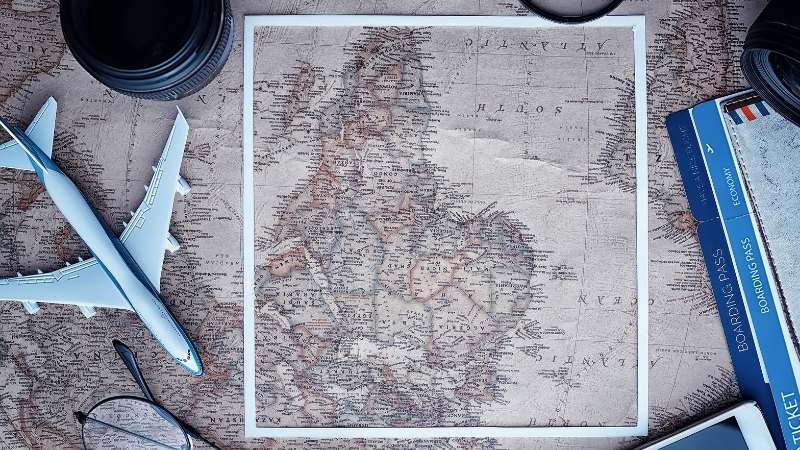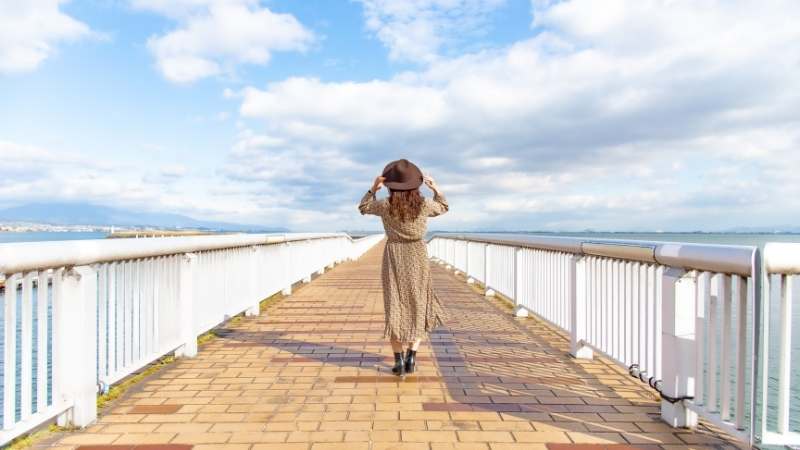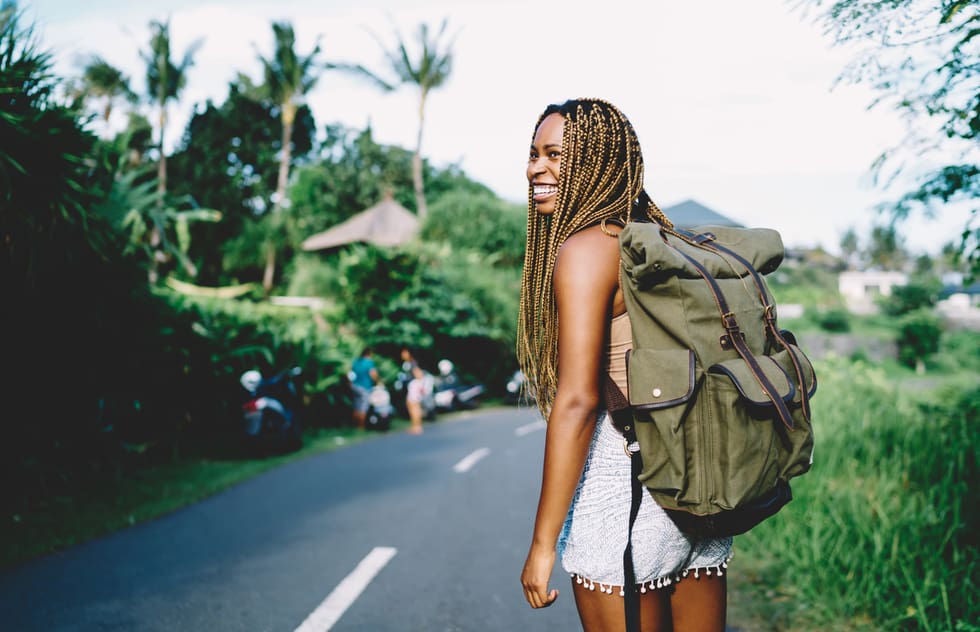Keep It Together: Your Travel Document Checklist

Alright, folks, get ready to embark on an epic journey through the world of travel photography!
In this hands-on manual, I’ll be dishing out all the tips and tricks you need to capture those unforgettable moments on your adventures.
We’ll dive into the best cameras for travel, uncover easy-to-use mobile photography hacks, master techniques for capturing breathtaking landscapes, and even learn portrait tips for shooting abroad.
And just when you think it can’t get any better, I’ll highlight some truly rewarding travel photography courses.
So grab your camera and let’s start crafting some incredible shots!
Key Takeaways
- Choose a compact mirrorless camera or a high-end smartphone for travel photography.
- Experiment with different angles, perspectives, and lighting for mobile photography.
- Master composition, angles, foreground interest, and leading lines for capturing breathtaking landscapes.
- Be aware of cultural etiquette, respect personal space, and adapt to different lighting conditions when shooting portraits abroad.
The Best Cameras for Travel
If you’re looking for the best cameras for travel, you’ll want to consider factors like portability and image quality.
As a passionate traveler and photographer, I understand the importance of capturing those unforgettable moments on the go.
That’s why I recommend compact mirrorless cameras like the Sony Alpha series or Fujifilm X-T4. These cameras are lightweight, making them easy to carry around while still delivering stunning image quality.
Another great option is a high-end smartphone like the iPhone 12 Pro Max or Samsung Galaxy S21 Ultra. These phones have advanced camera systems that produce impressive results, perfect for quick snaps or professional-looking shots.
Whether you prefer a dedicated camera or your trusty smartphone, finding the right gear will ensure that your travel memories are beautifully preserved.
Easy-To-Use Mobile Photography Hacks
You’ll love these simple tricks to take stunning photos with your mobile device while on the go.
As a travel enthusiast, I understand the desire to capture every breathtaking moment and share it with the world.
With just a few easy-to-use mobile photography hacks, you can elevate your travel photos from ordinary to extraordinary.
First, experiment with different angles and perspectives to add depth and interest to your shots.
Second, make use of natural light by shooting during the golden hour or positioning yourself near a window for soft, flattering lighting.
Third, don’t be afraid to get up close and personal with your subject for intimate portraits that truly capture the essence of your travels.
Finally, edit your photos using apps like Snapseed or VSCO to enhance colors and create a cohesive aesthetic.
These tricks will help you unleash your creativity and document your adventures in an authentic way that reflects who you are as a traveler.
Techniques for Capturing Breathtaking Landscapes
When it comes to capturing breathtaking landscapes, there are a few key techniques that can make all the difference.
First, mastering composition is essential for creating visually appealing images. I’ll be sharing some composition tips that will help you create balanced and compelling compositions in your landscape photography.
Additionally, lighting plays a crucial role in landscape photography, so I’ll be discussing various lighting techniques that will help you capture stunning landscapes.
Composition Tips for Landscapes
To create stunning landscape photographs, try experimenting with different angles and perspectives. By changing your viewpoint and framing, you can capture unique and captivating images that stand out from the crowd. Here are some composition tips to help you elevate your landscape photography game:
-
Foreground Interest: Include an element in the foreground that adds depth and interest to your shot. It could be a rock, a tree, or even a person.
-
Rule of Thirds: Divide your frame into thirds both horizontally and vertically, then place key elements along these lines or at their intersections for a visually appealing composition.
-
Leading Lines: Utilize natural lines like roads, rivers, or fences to guide the viewer’s eye through the image and create a sense of depth.
Remember, rules are made to be broken! Don’t be afraid to experiment and trust your creative instincts.
Now let’s dive into lighting for stunning landscapes.
Lighting for Stunning Landscapes
By adjusting my camera settings and being aware of the direction and quality of light, I can create stunning landscapes that evoke a sense of awe and wonder.
Lighting plays a crucial role in capturing breathtaking landscape photos. The soft golden glow during sunrise or sunset adds warmth and depth to my images, while the harsh midday sun casts shadows that can create interesting patterns.
I often use backlighting to highlight the silhouette of trees or mountains against a vibrant sky. Understanding how different types of light affect my subjects allows me to experiment with various techniques and create unique compositions.
Editing Landscape Photos
After capturing stunning landscapes with the perfect lighting, it’s time to enhance their beauty through editing. Editing landscape photos allows you to bring out the colors, details, and atmosphere that make each location unique.
Here are a few techniques I use when editing my travel shots:
- Adjusting exposure and contrast: I start by fine-tuning the exposure and contrast to achieve a balanced look.
- Enhancing colors: Using tools like saturation and vibrance, I bring out the richness of the natural hues present in my images.
- Sharpening and clarity: By applying selective sharpening and clarity adjustments, I ensure that every detail in the landscape pops.
With these editing techniques in your arsenal, you can transform your already breathtaking landscapes into truly awe-inspiring works of art.
Now let’s move on to portrait tips for shooting abroad, where we’ll delve into capturing people in different cultures while respecting their uniqueness.
Portrait Tips for Shooting Abroad
When shooting portraits abroad, it’s important to be aware of cultural posing etiquette to ensure that you respect and honor the local customs. Understanding how people in different countries prefer to pose can greatly enhance your ability to capture authentic and meaningful portraits.
Additionally, lighting in foreign environments can present unique challenges, as sunlight intensity and direction may vary significantly from what you’re accustomed to. By learning how to adapt to different lighting conditions, you’ll be able to create stunning portraits that truly showcase the beauty of your subjects and their surroundings.
Cultural Posing Etiquette
To avoid cultural misunderstandings, it’s important to be aware of the proper posing etiquette while photographing people from different cultures. Here are some key tips to keep in mind:
-
Respect personal space: Different cultures have different boundaries when it comes to physical contact. Always ask for permission before touching or getting too close to your subject.
-
Be mindful of gestures: Certain hand signs or gestures may carry different meanings in various cultures. Research and understand local customs to avoid inadvertently offending someone.
-
Consider religious beliefs: Some poses or actions may go against religious beliefs. It’s essential to be sensitive and respectful of these practices.
By being conscious of these posing etiquettes, you can capture authentic and meaningful photographs while respecting the cultural norms of your subjects.
Now, let’s move on to discuss lighting in foreign environments…
Lighting in Foreign Environments
Understanding the lighting conditions in foreign environments is essential for capturing stunning photographs. When I travel to new places, I always make it a priority to observe and analyze the light around me. Whether it’s the soft morning glow of a sunrise or the dramatic shadows created by a setting sun, lighting can greatly impact the mood and composition of a photograph.
In tropical destinations, like Bali or Costa Rica, where sunlight is abundant, I take advantage of the harsh midday sun to create vibrant and dynamic images. On the other hand, when exploring cities like Paris or Tokyo with their unique urban landscapes, I pay attention to artificial lighting sources such as streetlights or neon signs that can add an atmospheric touch to my shots.
By understanding how different types of light behave in foreign environments, I am able to adapt my photography techniques accordingly and capture truly remarkable images.
Now that we’ve covered the importance of lighting in foreign environments, let’s move on to highlighting rewarding travel photography courses that can further enhance your skills behind the lens.
Highlighting Rewarding Travel Photography Courses
There are many rewarding travel photography courses that can enhance your skills and take your photos to the next level. These courses offer invaluable opportunities to learn from experienced photographers, explore new techniques, and gain insights into capturing stunning images while traveling.
Here are three sub-lists of the best travel photography courses:
- Online Courses:
- Introduction to Travel Photography: Learn the fundamentals of composition, lighting, and storytelling.
- Advanced Editing Techniques: Discover how to enhance your photos using editing software like Lightroom or Photoshop.
- The Art of Street Photography: Master the art of capturing authentic moments in bustling city streets.
- Workshops:
- Landscape Photography Retreat: Immerse yourself in nature and learn how to capture breathtaking landscapes under expert guidance.
- Cultural Immersion Photography Workshop: Explore different cultures while learning how to capture their essence through photography.
- Adventure Photography Expedition: Combine adrenaline-pumping activities with photography lessons for unique shots.
- Photo Tours:
- Wildlife Safari Photography Tour: Embark on an unforgettable journey through wildlife reserves and learn how to photograph animals in their natural habitats.
- Architecture & Cityscape Tour: Capture stunning architectural marvels and urban landscapes in vibrant cities around the world.
- Food & Culinary Photography Experience: Indulge in delicious cuisines while mastering the art of food photography.
By enrolling in these rewarding travel photography courses, you will not only improve your skills but also create lasting memories through captivating images.
Now let’s dive into a hands-on manual on travel photography tips…
Hands-On Manual on Travel Photography Tips
When it comes to travel photography, there are so many tips and tricks that can take your pictures from ordinary to extraordinary. As someone who loves capturing the beauty of the world through my lens, I’ve learned a few things along the way that I’m excited to share with you.
From choosing the best camera for travel to mastering easy-to-use mobile photography hacks, I’ll guide you through every step of the process. You’ll learn techniques for capturing breathtaking landscapes that will leave you in awe, as well as portrait tips for shooting abroad and creating stunning images of people from different cultures.
But don’t worry, this won’t be just another boring manual. We’ll delve into hands-on exercises and practice sessions that will allow you to put these tips into action right away.
Frequently Asked Questions
What Are Some Tips for Shooting in Low Light Conditions While Traveling?
When shooting in low light conditions while traveling, it’s important to adjust the ISO settings on your camera and use a tripod for stability. Don’t be afraid to experiment with long exposures for stunning night shots.
How Can I Avoid Overexposure in My Travel Photographs?
To avoid overexposure in your travel photographs, adjust the exposure settings on your camera or mobile device. Experiment with different lighting conditions and use techniques like bracketing or using a neutral density filter. Consider taking a travel photography course to learn more.
Are There Any Specific Camera Settings I Should Use When Shooting Landscapes?
When shooting landscapes, it’s important to use the right camera settings. I suggest setting a low ISO for optimal image quality, using a small aperture for depth of field, and adjusting the shutter speed accordingly.
Can You Provide Some Tips for Taking Candid Portraits While Traveling?
When taking candid portraits while traveling, it’s important to capture the essence of the moment. Look for natural lighting and interesting backgrounds. Engage with locals to create a relaxed atmosphere. Consider taking a travel photography course to enhance your skills.
Where Can I Find Affordable and Reliable Travel Photography Courses Online?
I found some great travel photography courses online that are both affordable and reliable. They offer hands-on instruction and cover everything from composition to editing. Check out courses on platforms like Udemy and Skillshare for a wide range of options.
















